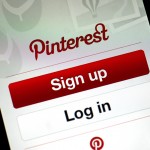
Hand Out Some Warm Fuzzies – Get Your Emotional Branding On!
by admin
Posted on November 11, 2014 at 14:40 PM
For many women (and men, too), shopping can fulfill an emotional need. There’s nothing quite like finding the perfect steal, and the joy that follows an all-out shopping spree. What is the psychology behind why it ‘feels good’ to spend money on the things we love? How do advertisers connect to consumers this way? It’s pretty common knowledge that in many instances, goods and services are purchased based on an emotional connection to the brand or an emotional need that has to be filled. Why are so many businesses sticking to the status quo to market themselves and missing opportunities to personally connect with their consumers?
Here are some tips to keep in mind when getting into the hearts and minds of your target audience:
- Think of your consumers as real people. These are people with jobs, dreams, and lives. Think of ways you can reach them where they are. In other words, sell less of your product or service and sell more of the experience. How will you make their lives better, easier and more awesome in general? Car commercials tend to excel at this type of emotional connection, as consumers envision how much easier their lives will become once they have that foot activated rear lift hatch, built in reverse camera or automatic accident avoidance brake sensor. Add a couple of kids in car seats in the back and show an accident avoided with said bells and whistles? Every parent will agree that the emotional strings have officially been tugged.
- Make your content shareable. Sharing is the best advertising because it’s free. Even more valuable is the fact that you create brand ambassadors, or people who are promoting you simply because they feel a connection to your brand. A prime example of branding that became a viral sensation was Coca-Cola’s clever campaign that added names to the sides of their cans and bottles. The campaign, called Share a Coke, spawned more sales for them in an otherwise declining market. Tens of thousands of photos popped up on social media of users sharing the names they found with friends who had that name…or when they found their own name (Coca-Cola selfies, if you will.) You can think outside of the box for emotionally stirring content; videos, illustrations and even memes (images with humorous quotes and sayings) aren’t off limits if they are memorable and consistent with your messaging. I think the term “memes” needs to be defined.
- Learn what your consumers’ emotional hot buttons are. What drives your target audience to make a purchase? Is it excitement of discovery, family values, desire to belong, need to have the best, nurturing response, reinvention, intellectual growth? Take the iPhone, for example. Apple has perfected the art of their branding by one-upping their own product every 18 months. Why? Because they know that the emotional hot button of their ideal customer is their need to have the newest toy on the market, and they have to have it NOW. Third world communities stand in line for hours for clean drinking water; Apple addicts stand in line for hours for the next, moderately improved version of something they already have. Sense of urgency, incredible video promotion and introductory incentives all add to the emotional insecurity of not yet having the newest product.
- Tell a story. Most morals are learned as children through storytelling, and the psychology behind retaining those lessons is still very relevant in business. The goal is to keep your customer thinking about your brand, and tying positive emotions to those thoughts. Long after your commercial has aired, your print ad has been seen, or other touch points have been delivered, how have you told your story in a way that consumers relate to and find transparent to who you are as a company?
- Leave them with a feeling. Not all emotions of a brand have to be happy or warm and fuzzy. Sometimes the appropriate response may be sadness, discomfort or even anger. We’ve all seen the Sarah McLaughlin BCSPCA television ads aired on television (if you haven’t, get tissues and watch it). The end goal for the BCSPCA wasn’t for the viewer to feel good; it was meant to spur action, so the desired emotion for them was to solicit sadness and guilt over those poor little animals. The somber music, devastatingly sad pictures and emotional voiceover work were all used to elicit a deep stirring in the viewer…so much so, that many viewers end up changing channels when they see a replay of the commercial because it’s just too sad to watch again. A bit extreme, perhaps, but effective nonetheless. In 2013 alone, the BCSPCA found loving homes for 14,259 homeless animals, provided care for 41,691 animals in distress, and conducted 7,839 new animal cruelty investigations.
You don’t have to make a direct emotional link to your product or service (there’s only so much emotion you can tie to brake pads or end-of-year tax return services), but your messaging should clearly indicate who you are and what you do or sell by relating to your audience. The emotional associations you create with your marketing can and do significantly influence consumers later, such as when they encounter your product in a store. The more positive and frequent the emotional associations are, the more likely a consumer will favor your product or service over a lesser known competitor.



